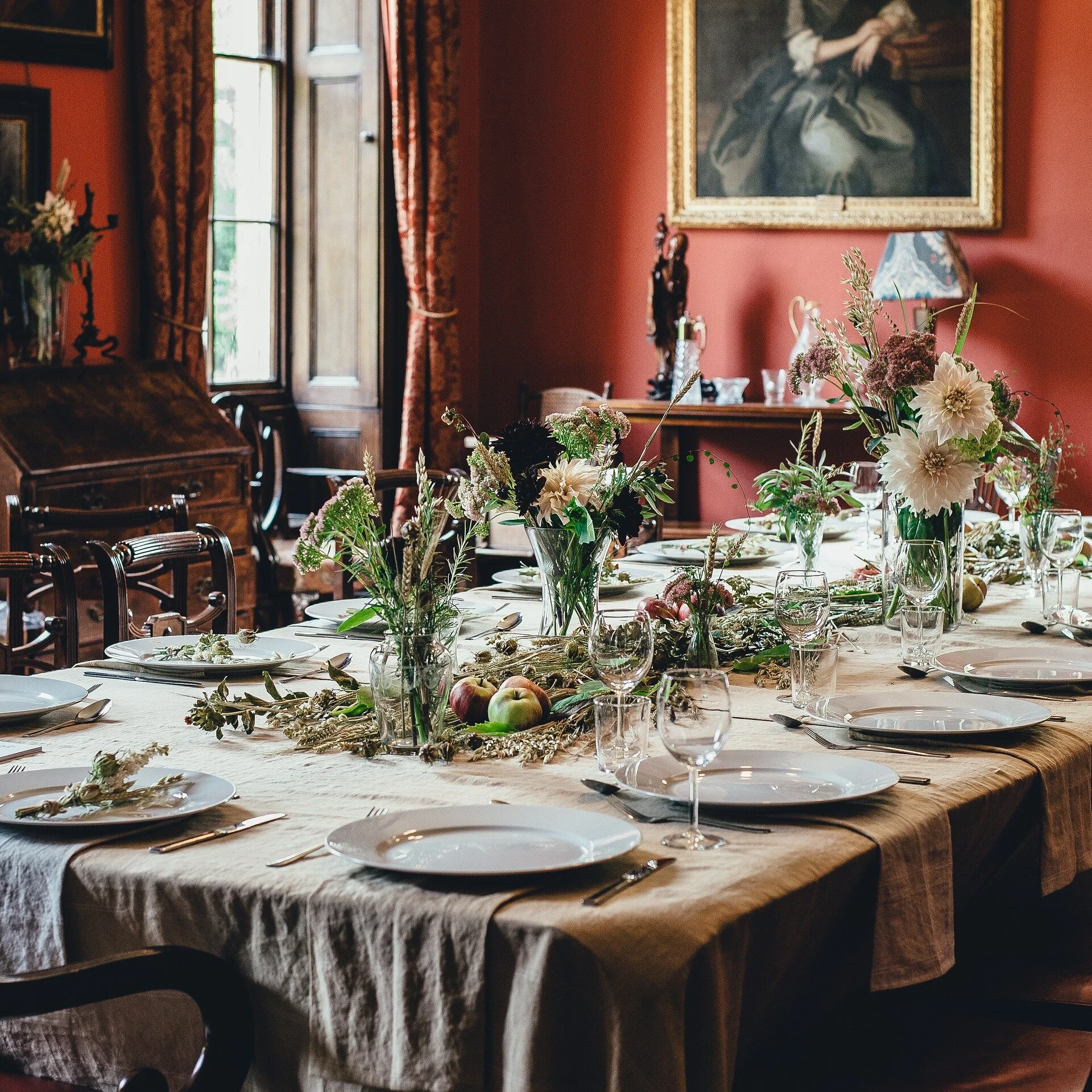The Depressed Dining Room: Understanding the Current Market for Formal Dining Antiques
As appraisers, we hate having to deliver bad news to clients about the market realities for beloved heirlooms. One of the most hard-hit categories at the moment are objects associated with formal dining. In this article, California appraiser Elizabeth Stewart, PhD, shares her thoughts about the factors behind the currently weak interest for antiques used in the dining room.
I am an appraiser of silver, porcelain, glass as well as American and English period furniture in Montecito, California – a town known for its large estates and considered the wealthiest area around beautiful Santa Barbara. Recently I had the honor of an interview for NerdWallet Magazine with Liz Weston.[i] She was interested in my view that the most under-appreciated segment of the market for fine antiques is often found in my clients’ dining rooms, particularly objects related to the ritual of dining.
The philosophy of eating in family and social groups with certain status/gender specific signals has changed, and so has the perception of the value of the objects involved in that ritual. In this article, I will review highlights of this value dilemma. I have helped hundreds of my clients see the reality of the current down market for the type of dining objects that my generation treasured but are now most likely in storage. I also want to offer a short description of the factors driving the market forces and the reasons why certain objects (china, silver, crystal and linens) have been devalued during these past thirty years.
We, as a culture, have lost the urge to formally dine. Our philosophy of how to gather for a shared meal has changed the way we value the paraphernalia involved, from the days of the Silent Generation (my grandparent’s era), to the Millennial Generation (my son’s era). There is now a completely different set of objects valued (or not valued, as the case may be).
Civilizations have always had a ritual around consuming food, but the ritual, and therefore the reason, around gathering to break bread has changed drastically. In no other codified room of the house has the room-based ritual, symbolized by the objects contained therein, changed quite as much as the dining room. In my grandparent’s house, we had observed yet unspoken dining rituals. For example, who (and which female of a certain age group) cooked what, what gender did certain dining jobs (older men could bring in the main meat course, younger men could bring out the garbage), and even aged-based table seating (remember the kid’s table?). These rituals involved the objects we ate with; for example, the cutlery (younger kids had smaller kid-sized sterling for that kid’s table) signaled that a child was coming of age if he was given a shaper knife or a full-sized place setting.
If you have grown children like me, the most devalued genre of objects that your kids do not want revolves around the dining room (yes, once we had such a place, with a huge fine wood table!) Most newly built or updated homes do not feature a dining room. At one point this room was the heart of our households, as well as used for storing all the dining related objects. We had china cabinets for different services of dinnerware brought out at specific times of the year, and sometimes they were brought forth at only certain times of the day.[ii] We still do much the same things in our bedrooms, our kitchens, and our bathrooms. Yet the ritual around the dining room (if you even have one) is completely modernized.
The reason that we as a society today do not value fine china used for certain occasions is that those codified rituals are fast fading. We do not have a dining ritual except for the most select of holidays. Think of the term itself: formal china. What does that exactly mean? I can tell you what it does not mean: it does not mean microwave and dishwasher safe. My clients are dismayed to find that a fine service for a 24-place setting is worth under $500, if they can even find a market for sales.
Fine silver is valued for its silver content if it is sterling (if it is silver plate, forget it), but it is not valued for the ritual which says that the good cutlery is reserved for guests upon high holidays with certain age and gender limitations. For example, the eldest man of the family usually reserved the right to wield a carving knife and sharpener. Therefore, the market for fine cutlery is currently way down.
Think of the many types of crystal glassware you might have had: two types and sizes of wine glasses, highball and cocktail glasses, cordials, spirit tumblers, kid’s mugs and cups, grandfather’s own whiskey glass that no one washed but grandmother. The list is exhausting. We do not have that level of formality around what is sipped by whom at what time of day. A can or a red plastic tumbler works well no matter time of day or setting, and therefore the value of these whole services of drinking objects is currently very depressed.
I despair when a client asks me what they can do with fine table linens. Even the best, which are usually real linen with real lace, are nearly impossible to sell today. Once, covering a table was a sign of respect and honor. Today a tablecloth is (at home) unnecessary, and prompts anxiety when laundry time comes around (and who even owns an ironing board anymore, let alone uses it?) I recently was upgraded to a first-class seat on an airplane and was bemused to find the cabin attendant covered my plastic lap tray with a white cloth. This is a ritual which is fast fading, except as a nod to a past tradition, which signals “class.” When the tradition fades, the object becomes devalued.
There’s always a “why” behind market forces, and this is the answer to the why for the current market for objects associated with formal dining: our current culture does not find value in the ritual of drinking or eating with certain fine objects at a certain fine table at home.[iii] Think about this significant change: the status of home versus dining out. For many of us today, when we want a more formal meal, we leave home. And those former objects of status suffer in value.
Please feel free to reach out to me for guidance about the most advantageous arenas for the downsizing of dining accoutrements. Based on my experience in this area, I have a few suggestions such as selling your dining linens to designers who sew bridal gowns and other unbelievable but true valuation remedies for dining room objects.
Elizabeth Stewart, PhD, AAA is the owner of Elizabeth Appraisals in Santa Barbara, California and a Certified Member of the Appraisers Association of America. You can visit her website at https://elizabethappraisals.com.
[i] Liz Weston is an esteemed and oft-quoted financial manager, and a columnist for the Associated Press and LA Times.
[ii] I have a client who inherited an Austrian porcelain tea service, complete with small plates for tiny sandwiches and cakes, used in the mid late afternoon in the early 20th century.
[iii] This is different when one dines out, however. At a fine restaurant, one expects these rituals to be observed, but one does not expect them at a friend’s house, for example.
© Elizabeth Stewart, PhD 2020







